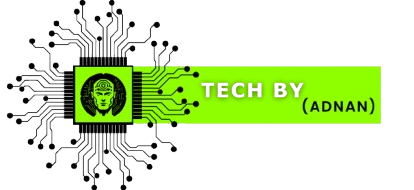Hello everyone! My name is Adnan, and welcome to the blog.
You have a creative idea. You want to edit a photo for your social media, design a logo for your new side hustle, or just create some digital art. You look up the best tools, and there they are: Adobe Photoshop and Illustrator. They are the undisputed kings, the industry standard… and they come with a hefty monthly subscription fee. For students, freelancers, hobbyists, or anyone on a budget, that recurring cost can feel like a major barrier to creativity.
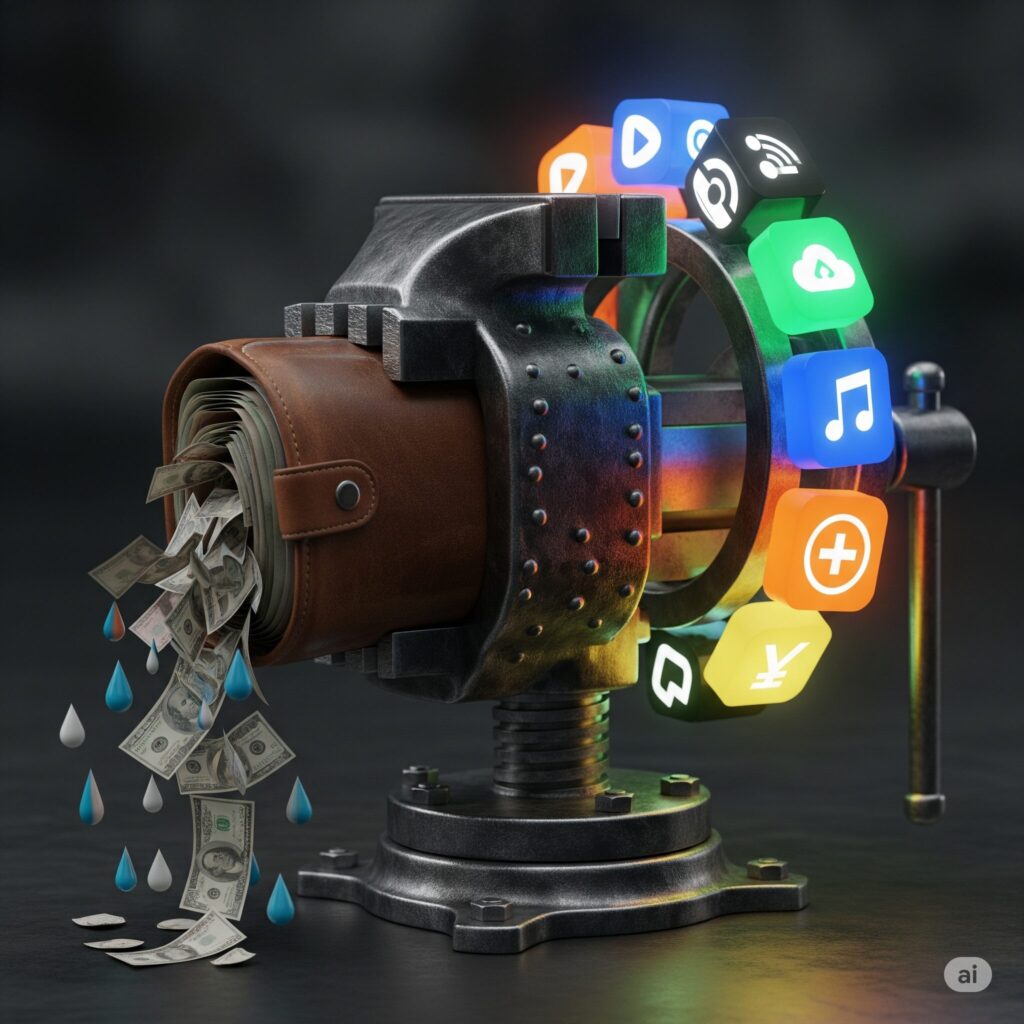
For years, I was a loyal Adobe user myself. I paid that subscription fee every month. But as the costs added up, I started to wonder: is there a better way? I embarked on a mission to see if I could completely replace my expensive Adobe workflow with free, powerful, open-source software. It took some time, a bit of learning, and a few moments of initial frustration, but the answer was a resounding yes.
This guide is the result of that journey. I’m here to show you the most powerful free alternatives to Photoshop and Illustrator and to give you my honest, hands-on advice on making the switch. Let’s unlock your creativity without breaking the bank.
Replacing Adobe Photoshop: The World of Raster Editing
First, let’s talk about raster graphics. This is anything made of pixels, like a photograph or a detailed digital painting. When you want to edit a photo, create web graphics, or draw, you need a raster editor. Photoshop is the king, but it has a powerful, free rival.
The Heavyweight Contender: GIMP
GIMP (which stands for GNU Image Manipulation Program) is the most famous and powerful free Photoshop alternative on the planet. Don’t let the slightly strange name fool you; this is an incredibly deep and feature-rich program with professional tools like layers, masks, advanced color correction, smart selection tools, and a huge library of community-made plugins.
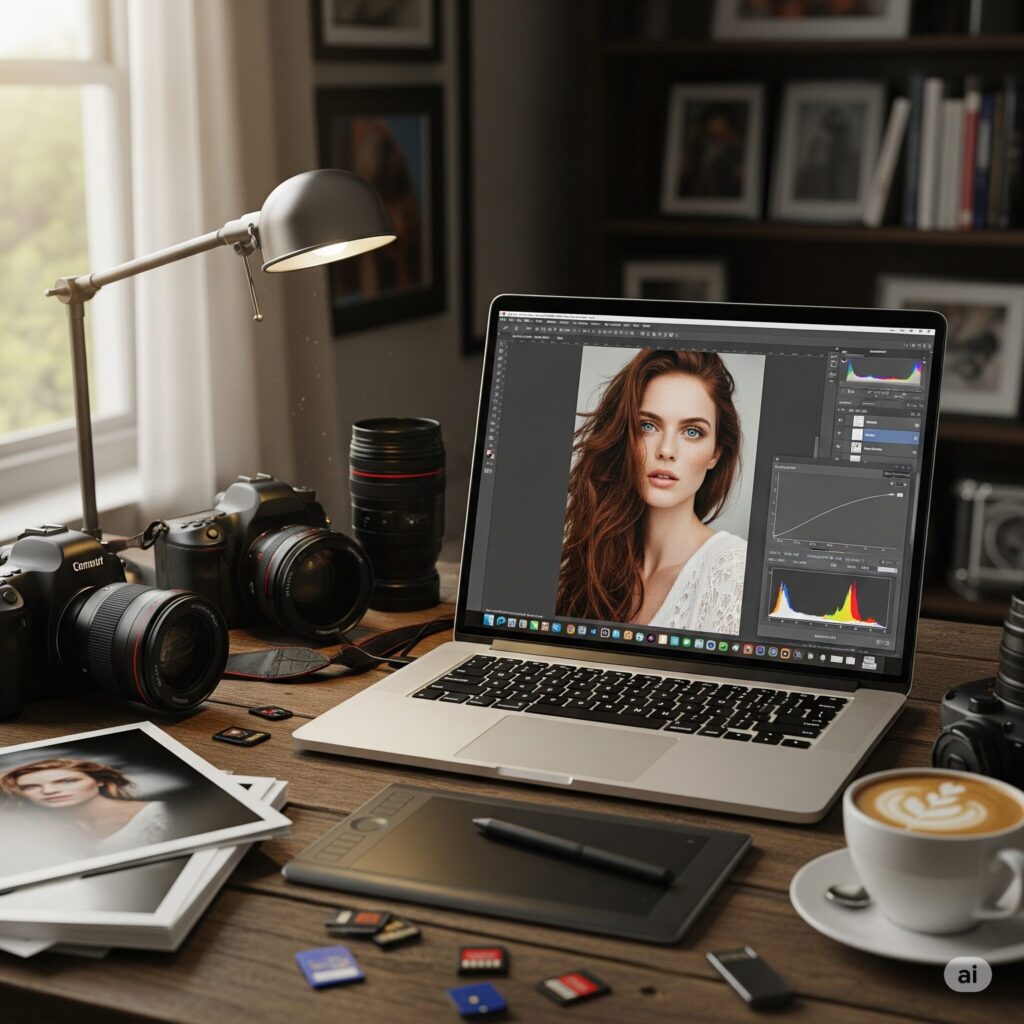
My Experience: I’ll be honest, when I first opened GIMP, the interface felt a bit alien after years of Photoshop. But after watching a few tutorials and spending a weekend with it, I had a huge “aha!” moment. I realized GIMP could do about 95% of what I ever used Photoshop for—retouching photos, creating graphics for my blog, and making thumbnails. Once you get used to it, its power is undeniable.
Comparison: GIMP vs. Photoshop
| Feature | GIMP | Adobe Photoshop |
| Cost | 100% Free, Forever | Subscription-based (monthly/yearly fee) |
| Core Features | Layers, Masks, Curves, Filters, Paths | All the same core features, often with a more polished interface. |
| Color Mode | Primarily RGB (for screens) | Excellent support for both RGB (screen) and CMYK (for professional printing). |
| Ease of Use | Steeper learning curve for long-time Adobe users. | Industry-standard, familiar interface. |
| Platform | Windows, macOS, Linux | Windows, macOS |
Another Great Option for Artists: Krita
For users whose main goal is drawing or digital art, I have to mention another amazing free tool. While GIMP can do it, many artists believe that Krita for digital painting is even better than Photoshop. Its brush engine is phenomenal, it handles drawing tablets beautifully, and it’s designed from the ground up for artists and illustrators.
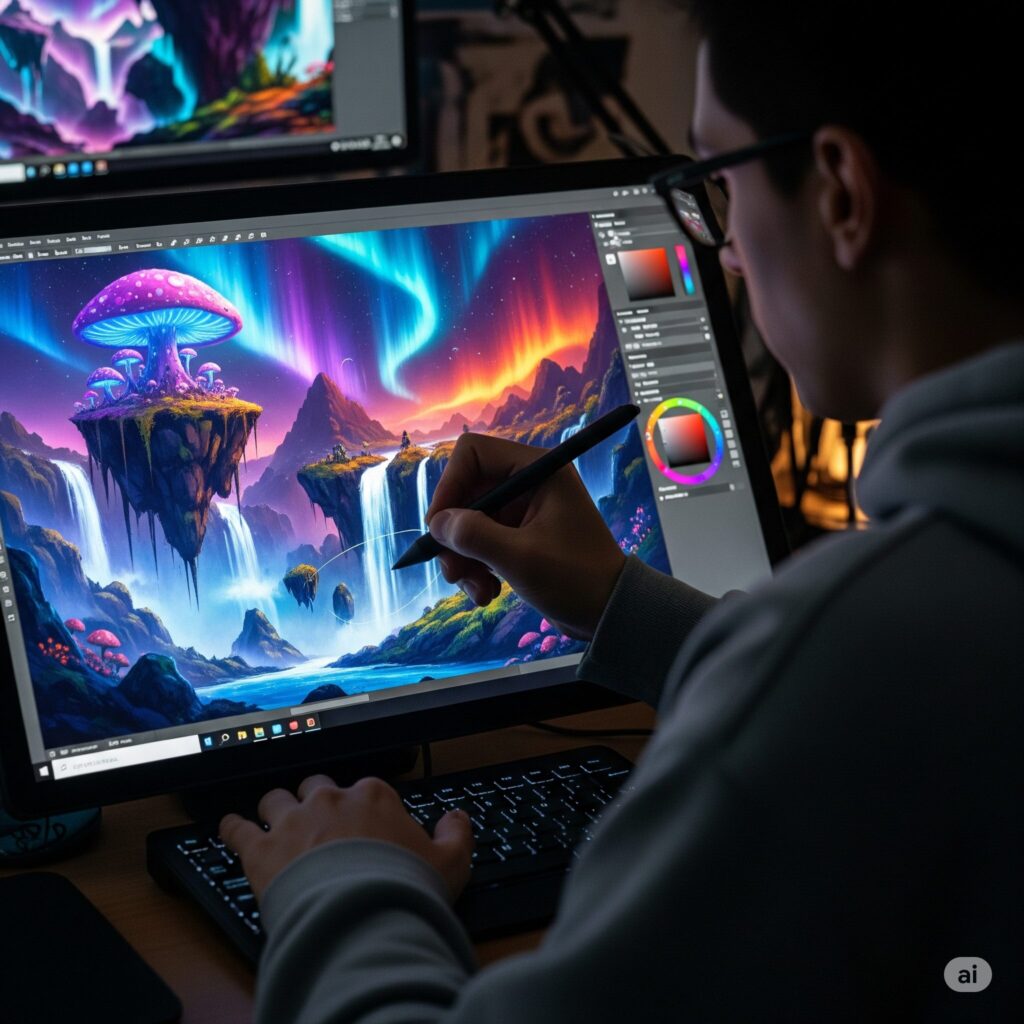
Replacing Adobe Illustrator: The World of Vector Graphics
Next up is vector graphics. Unlike pixels, vectors are shapes made of mathematical paths. This means you can scale them to any size—from a tiny icon on a website to a giant billboard—and they will never lose quality. This is what you need for logo design and most illustration work.
The Heavyweight Contender: Inkscape
Inkscape is to Illustrator what GIMP is to Photoshop. It’s a powerful, professional-grade, and completely free vector graphics editor. It’s the perfect tool for logo design, creating icons, making diagrams, and any illustration work that requires clean, scalable lines.
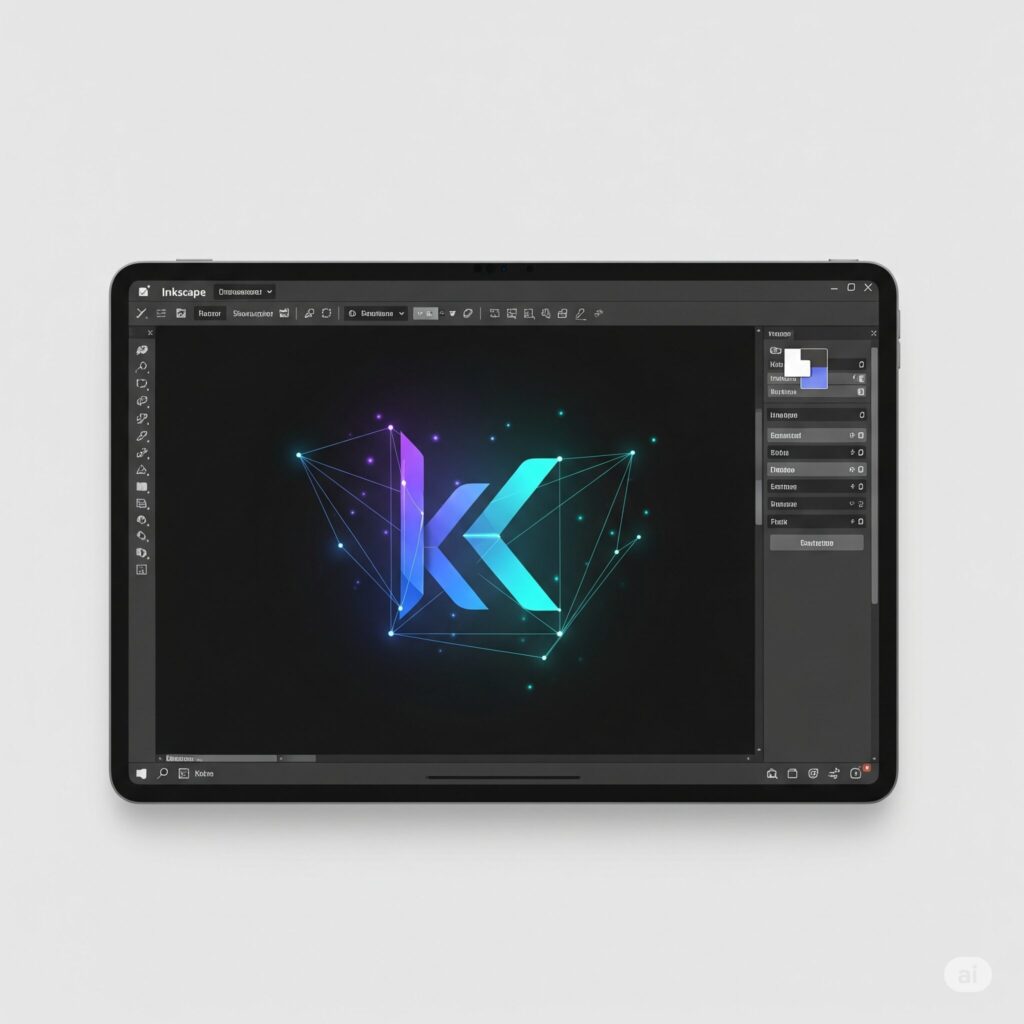
My Experience: I found the transition to Inkscape surprisingly smooth. Its tools for creating and manipulating shapes and paths felt incredibly intuitive. For all my logo work and for creating the diagrams I use on this blog, Inkscape has completely replaced Illustrator in my workflow.
Comparison: Inkscape vs. Illustrator
| Feature | Inkscape | Adobe Illustrator |
| Cost | 100% Free, Forever | Subscription-based (monthly/yearly fee) |
| Core Features | Powerful Pen/Node tool, Gradients, Layers | All the same core features, industry-leading tools. |
| File Format | Native SVG (a universal web standard) | Native AI (Adobe’s proprietary format) |
| Integration | Standalone program. | Seamless integration with other Adobe products. |
| Platform | Windows, macOS, Linux | Windows, macOS |
My Honest Experience: Making the Switch from Adobe
Let me be completely transparent: ditching Adobe wasn’t a simple, overnight process. The first few days in GIMP felt strange; the menus were in different places, and some of my muscle-memory keyboard shortcuts didn’t work. It took a dedicated weekend of watching tutorials to feel comfortable. But then I discovered that I could completely customize GIMP’s interface and shortcuts to feel much more like Photoshop, and that changed everything.
The biggest reward? Freedom. Freedom from monthly bills that creep up every year. Freedom from being locked into one company’s ecosystem. And the freedom that comes from supporting the amazing global community of volunteers who build and maintain this incredible software for everyone to use.
Who Should Use What? Your Quick-Start Guide
Feeling a bit overwhelmed by the choices? No problem. To find the best free photo editor or vector tool for your specific needs, here’s a simple breakdown:
- If you are a photographer who needs powerful tools for photo retouching, color correction, and manipulation: Start with GIMP.
- If you are a digital artist or illustrator who loves to draw and paint with a tablet: Download Krita right now. You will fall in love with its brush engine.
- If you are a graphic designer who needs to create logos, icons, or illustrations that can be scaled to any size: Inkscape is your new best friend.
- If you just need to do quick, simple edits online without installing anything: Check out Photopea. It’s a fantastic, free, web-based editor that looks and feels almost exactly like Photoshop.
Conclusion: Creativity Shouldn’t Have a Subscription Fee
The idea that you need to pay a recurring fee to access professional-grade creative tools is a powerful marketing myth. The world of Free and Open-Source Software (FOSS) is more powerful, user-friendly, and stable than ever before. While there may be a small learning curve when you step away from the familiar Adobe ecosystem, the rewards—both financial and philosophical—are immense.
You can save hundreds of dollars a year, gain a deeper understanding of your tools, and join a community that is dedicated to making creativity accessible to everyone.
Frequently Asked Questions (FAQ)
Can GIMP open and edit my old Photoshop files (PSDs)?
Yes, absolutely. GIMP has excellent support for opening and editing PSD files. While a few very complex, Photoshop-specific layer effects might not transfer perfectly, for most projects, you can work with your old files with ease.
Can Inkscape open Illustrator files (AI)?
Yes, Inkscape can import and edit AI files. For the best compatibility, it’s often recommended to save your Illustrator files in a universal format like SVG or PDF before opening them in Inkscape.
Is this software safe to download? I’m worried about viruses.
Yes, it is completely safe, as long as you download it from the official websites (gimp.org, inkscape.org, krita.org). These are respected, long-standing projects with millions of users worldwide. Never download them from untrusted third-party sites.
I work in a professional print shop. Can I use these for CMYK print work?
This is one area where Adobe still has a clear advantage. Photoshop and Illustrator have industry-standard, built-in CMYK color management. While GIMP and Inkscape have plugins and workarounds for CMYK, the process can be more complex. For professional, color-critical print jobs, sticking with Adobe is often necessary.
Where can I find good, free tutorials for GIMP and Inkscape?
YouTube is your best resource! There are thousands of high-quality, free tutorials for every skill level, from “your first 10 minutes in GIMP” to advanced photo manipulation techniques.
Will these programs run on my older computer?
Generally, yes. GIMP and Inkscape are often less demanding on your computer’s resources than the latest versions of Photoshop and Illustrator, making them a fantastic choice for running on older or less powerful hardware.
READ MORE ARTICLES
The Ultimate Guide: How to Optimize Your Gaming PC for RT
How to Optimize Gaming Laptop for VR: Complete 2025 Guide
How I Built a Tools Website with Google Gemini (A Step-by-Step Case Study)
Building a Gaming PC in Pakistan: The Complete 2025 Buyer’s Guide
How to Build a Home Media Server Using an Old PC (Your Personal Netflix)
An Introduction to Mechanical Keyboards: A Guide for Gamers and Typists (2025)
